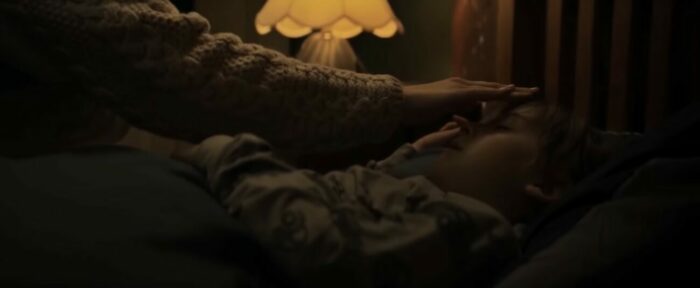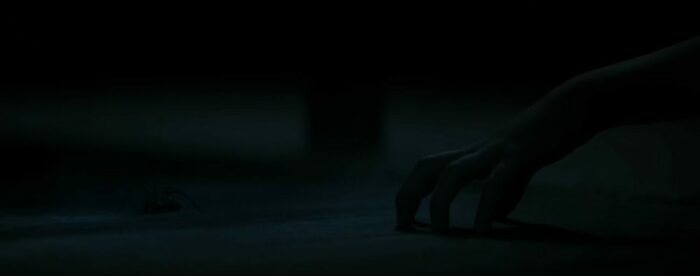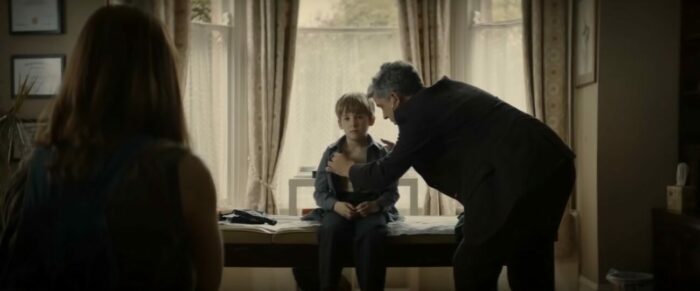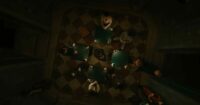When you talk to horror fans about their favorite subgenres, changelings don’t come up very often. There simply aren’t enough movies that deal with these mythical creatures to make much of an impression on most people, so their unpopularity is totally understandable. But you know what? I love changelings. They’re some of my favorite cinematic monsters, and one of my favorite films about them is The Hole in the Ground.
Seriously, pretty much everything about this movie is fantastic. The characters, the scares, and the atmosphere are all masterfully executed, so in my opinion, The Hole in the Ground is one of the best 2010s horror films most people have never seen. But don’t get the wrong idea. This movie is way more than just a fun scarefest. It has some real thematic substance too, and that’s what I want to explore in this article.
At its core, The Hole in the Ground is a story about parenthood, and the horror is essentially a metaphor for one of the scariest things about being a parent. Sure, on the surface it may seem like this movie just hits the same changeling notes we’ve seen numerous times before, but if we dig deeper and examine the way it uses those common tropes, we’ll see that it’s meticulously crafted to highlight one of the hardest challenges parents have to face.
The Basic Plot
But before we dive into the meaning of The Hole in the Ground, let’s take a step back and briefly go over the film’s plot. The story follows a single mother named Sarah and her young son Chris as they move to a new home in the Irish countryside, and unsurprisingly, the kid doesn’t seem too happy about the move. He didn’t want to leave his old life and his old friends behind, but his mother assures him that he’ll adjust and form new friendships soon enough.
Some time after the pair arrive at their new place, something terrible happens. Sarah wakes up in the middle of the night and hears a few strange sounds, and when she goes to Chris’ room to check on him, he’s not there. She panics and calls the police, but after a few minutes, the boy shows up again, apparently unharmed.

However, as the movie goes on, Sarah starts to think that Chris doesn’t quite seem like himself. Nobody else notices the subtle changes in him, but mothers aren’t fooled so easily. She quickly becomes more and more convinced that the thing living with her isn’t actually her son, and by the end, she’s proven right. “Chris” eventually makes it very clear that he’s not the little boy Sarah knows and loves, so the woman is forced to venture out into the woods behind her house and rescue her real son from the monsters that have stolen him away from her.
Spiders and Cheese
With that out of the way, now it’s time to dive into the nitty gritty of The Hole in the Ground. As you watch the movie, you’ll begin to notice a pattern: all of the differences Sarah sees in her son mimic the changes kids often go through as they get older.
For instance, there’s a scene early on in the film where Chris sees a spider in the house, and it absolutely terrifies him. He hops up on his chair and yells for his mother, so Sarah has to come save the day. She catches the creature in a jar and releases it outside, and she tells him he’s getting too old to be afraid of spiders. In contrast, after Chris is kidnapped, the changeling shows no fear of these eight-legged creepy crawlies. In fact, at one point in the story, Sarah even sees him capture a spider with his bare hands, and just as you’d expect from an inhuman monster, he eats the poor thing.
I’m sure you can see where I’m going with this. Children are often afraid of spiders, but as they get older, most of them outgrow that fear. Sarah even says as much, so the significance of this change is impossible to miss.

To take another example, there’s a moment in the movie when Chris is letting his pasta grow cold, so his mother suggests that he put some grated cheese on it to make it taste better. He responds that he doesn’t like “that dust cheese,” and he just lets the food sit there. Now, when you first watch The Hole in the Ground, it’s easy to dismiss this brief exchange as nothing more than inessential filler. After all, it doesn’t seem to have much bearing on the film’s plot. However, if you pay close attention to the story as it progresses, this scene actually becomes pretty important.
Sometime after Sarah starts to believe that the thing living with her isn’t really her son, she makes pasta again, and when she serves it, she also puts out some grated cheese. Chris happily puts the cheese on his pasta and gobbles it down, and when he suggests that his mother do the same, she repeats the line the real Chris gave her earlier in the film. She pretends not to like the “dust cheese,” but the fake Chris doesn’t catch the reference.
Admittedly, the significance of this change is a little more subtle than the one involving the spider, but let’s think about it a bit. As children grow older, their attitude towards spiders isn’t the only thing that changes. Their food preferences do as well. For instance, when I was a kid, I hated avocados. I couldn’t stand them. But now, as an adult, I love them. They’re one of my favorite foods, so I eat them as often as I can. And that’s exactly what happens in The Hole in the Ground. The changeling enjoys a food the real Chris hated, once again mimicking a common change most kids experience as they grow older.
A Parent’s Fear
Those are just two examples, but they’re representative of all the changes Sarah notices in her son. Every single one of them mimics the various ways kids change as they grow up, so The Hole in the Ground is essentially one big metaphor for the transition from childhood to adulthood.
On top of that, The Hole in the Ground also represents the fear these kinds of changes can instill in parents. There’s a scene in the movie where we see Sarah talking to a friend of hers, and she asks the woman a very interesting question. She says, “Do you ever look at your kids and not recognize them?” and then she clarifies that she’s talking about “how they are, their personalities,” not the way they look.
At this point in the film, Sarah doesn’t know that her son has been replaced with a changeling, so she thinks she’s just asking about the normal changes children often go through. However, we know what’s really going on, so when we hear this line, we know it’s actually referring to something more sinister.

And that double meaning makes these words really important. They connect the literal story of The Hole in the Ground with its metaphorical meaning, and they let us know that the movie is about more than just growing up in general. It’s a metaphor for the fears many parents have about who their kids will be when they grow up.
See, a parent’s job is to raise their children to become the best people they can be, but no matter how hard they try, parents never really know how it’s going to turn out. Will their efforts be successful, or are they going to wake up one day and not recognize the hateful and heartless monsters their children have become? Parents simply don’t know, and that uncertainty can be terrifying.
A Never-Ending Battle
Last but not least, let’s take a look at the final scene of The Hole in the Ground. It helps confirm everything we’ve seen so far in this article, and it adds one last wrinkle to the film’s message. After Sarah rescues Chris from the changelings and kills the monster that pretended to be her son, the two of them start a new life together in a new city. However, not everything is quite as perfect as you might expect. Sarah is apparently paranoid that the monsters will find them again, so she lines their new place with mirrors and constantly takes pictures of Chris.
See, earlier in the movie, she learned that changelings don’t take well to mirrors and cameras. Their reflections and their pictures come out blurry, so the woman’s bizarre obsession is actually a precaution against her son ever being kidnapped by these monsters again. However, in the final scene of the film, we learn that these measures aren’t 100% foolproof. She takes one more photo of Chris, and although his body comes out fine, his face is blurry. It seems like the boy was just moving his head too fast, but Sarah can’t be entirely sure.

It’s a happy but still somewhat ambiguous ending, and it mirrors real-life parenting in a clever way. Sarah knows that the changelings are an ever-present threat, so she has to do her best to protect her son from these nefarious creatures. At the same time, she also has to recognize that there are no guarantees. No matter how hard she tries to keep Chris safe, there’s always a chance she might fail, and as terrifying as that possibility may be, she has no choice but to live with it.
And in the real world, parents need to have a similar attitude towards the malicious influences that threaten to lead their children down the wrong path as they grow older. Granted, they don’t need to be quite as hypervigilant as Sarah is with Chris, but they still have to keep a close eye on their kids’ well-being. What’s more, they also need to accept that as long as their children are under their care, these threats will never go away. It’s a never-ending battle, just like Sarah faces with the changelings, and for many parents, that can be just as scary as the monsters in The Hole in the Ground.



